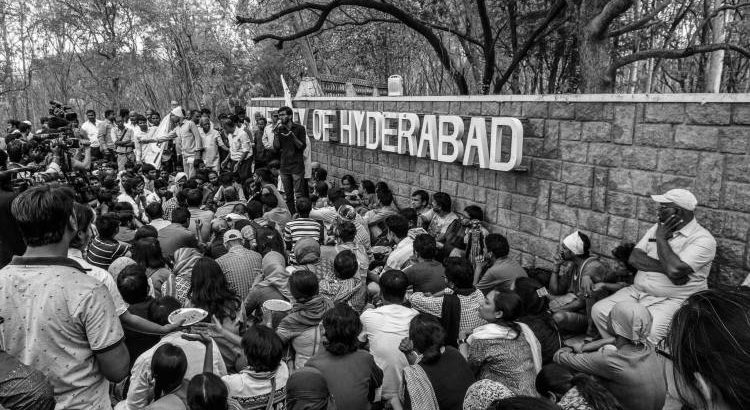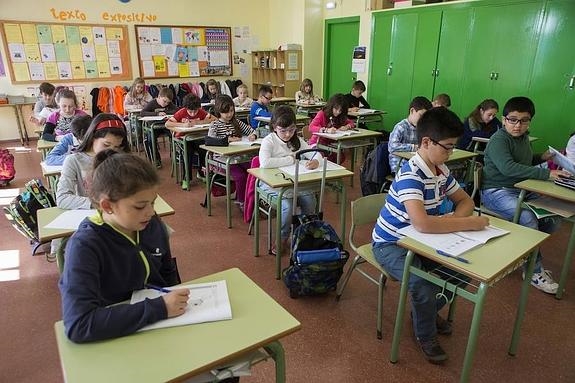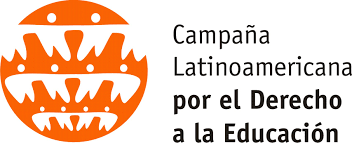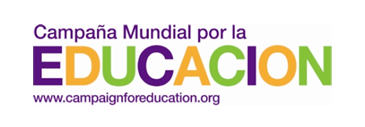Fund the Future: Education Rights Now
Global Action Week for Education 2016: 24-30 April 2016
Campaign and Social Media Tools
With this year’s Global Action Week for Education fast approaching, we write to provide tools and information to support your Fund the Future campaigns during the week itself, and beyond.
Key activities
Monday 25 April, 9am (GMT+2):
Launch of Global Education Monitoring (GEM) Report briefing on aid to education
The GEM Report team will be presenting its latest briefing which focuses on very recent trends in development and humanitarian aid to education. Links to this report will be circulated to GCE members as soon as they are available, but please follow the GEM Report team on social media for infographics and data:
https://twitter.com/GEMReport
https://www.facebook.com/efareport/
Monday 25 April, 10am (GMT+2):
Financing for SDG4-Education 2030: Leaving no one behind – what will it take to narrow inequity gaps?
This high level panel is a joint event organized by GCE and UNESCO, hosted at UNESCO Headquarters, Paris.
GCE will be represented by David Archer, Head of Programme Development at ActionAid and GCE Board Member.
If you will be in Paris on Monday 25th and would like to attend the event, please contact Sherry Abuel-Ealeh, Head of Communications as soon as possible (sherry@campaignforeducation.org)
This event will also be available by live webcast:
FLOOR : mms://stream.unesco.org/live/room_4_floor.wmv
EN : mms://stream.unesco.org/live/room_4_en.wmv
FR : mms://stream.unesco.org/live/room_4_fr.wmv
More information about the event is available here: http://en.unesco.org/events/global-action-week-2016-panel-discussion-financing-sdg4-education-2030-leaving-no-one-behind
GCE will be liveTweeting this event: please follow us on Twitter @globaleducation (www.twitter.com/globaleducation)
Hashtags and links
The Fund the Future site is available here:
www.fund-the-future.org
http://bit.ly/FTFGAWE
If you use Twitter or Facebook, the hashtags for Global Action Week are:
#FundTheFuture
#GAWE2016
In addition, ActionAid is running a photo campaign, using the hashtag #taxpaysfor. You can tweet or post on Facebook a picture of yourself holding your message, for example #taxpaysfor girls’ education.
You’ll also find ready-to-send autotweets on the Take Action section of the website; these are provided in text below for you to adapt to your own country contexts if you prefer.
GCE’s social media pages are:
www.facebook.com/campaignforeducation
www.twitter.com/globaleducation (@globaleducation)
ActionAid has prepared a detailed pack on its support for GAWE this year, which GCE Members are welcome to use:
https://docs.google.com/document/d/1EGPV3aHmmkEJO9y30mLu_SWzozcJ9y3ffzJumDk6uZo/edit
Photos and images
We’d love to see your images from your Global Action Week for Education activities, so please share them with us so we can share with the GCE network. You can upload them directly to the GCE Flickr feed by emailing them to: dab12any@photos.flickr.comor you can send them directly to Becka White at the GCE Secretariat: becka@campaignforeducation.org
You can also download a series of images for use on social media in the resources section of the site; these are currently available in English, Spanish and French.
Key messages
- Political commitments made at the global level mean little without financial commitments at the national level: no government will meet the education goal or targets without adequate and reliable financing, of good quality.
- Education underpins the achievement of all development goals: failing to make adequate investments in education puts the fulfilment of the entire SDG 2030 agenda at risk.
- Financial commitments which have already been made MUST be fulfilled – including domestic and donor commitments to GPE, bilateral commitments by donors, and global commitments contained in the Sustainable Development Goals, Education 2030 Framework for Action, and the Addis Ababa Action Agenda.
- Citizens have a responsibility to hold governments to account for reneging on any existing financial commitments which could deny them their right to education.
- The commitment to 12 years of free education from early childhood to secondary must be backed by prioritisation in national education budgets and in ODA to education.
- Youth and adults have been systemically failed by decades of underfunding for literacy programmes –this trend must be reversed to ensure that future generations can fulfil their potential, engage in active citizenship, and increase their contributions to communities and societies.
- Political leaders must make the necessary commitments to ensure quality and equity in education, prioritising investments that have the most impact.
- Domestic financing to fulfil the right to education IS accessible – with fairer tax systems, big companies paying their fair share, and when revenues generated by natural resources are converted into lasting benefits for citizens.
- Tax is the most sustainable source of financing for developing countries, and a concerted effort must be made by states to make global tax rules fairer.
- Public money, including through ODA, must go to strengthen public education systems
- Adequate funds must be allotted to address all forms of educational inequities including, but going beyond, gender to include other bases of exclusion.
- Budget data should be available in transparent, disaggregated and timely manner in a form that can be used for tracking by citizens and civil society.
Suggested Tweets (English)
All the SDGs rely on #education – but we need adequate, reliable, quality financing: http://bit.ly/FTFGAWE #FundTheFuture #GAWE2016
$39bn = the amount spent on advertising every 24 days, or the annual gap to fund kids’ #education #FundTheFuturehttp://bit.ly/FTFGAWE
Governments committed to 12 years’ free #education – now they must commit to paying for it! http://bit.ly/FTFGAWE #FundTheFuture #GAWE2016
$28bn = 10 days of global spending on alcohol, or the annual gap to fund adult #education http://bit.ly/FTFGAWE #FundTheFuture #GAWE2016
Companies paying their fair share of #tax can make a big difference to #education budgets http://bit.ly/FTFGAWE #FundTheFuture #GAWE2016
$156bn = annual cost to eradicate illiteracy – the same is spent at Walmart every 3 months #FundTheFuture #GAWE2016 http://bit.ly/FTFGAWE
Public moneymust go to public #education, not build the profits of private education providers! http://bit.ly/FTFGAWE #FundTheFuture #GAWE2016
#US has c.7300 nuclear weapons: the cost of 22 would close annual funding gap for kids’ #education #FundTheFuturehttp://bit.ly/FTFGAWE
Funding is needed for equitable, inclusive, quality #education& lifelong learning #FundTheFuture now! http://bit.ly/FTFGAWE #GAWE2016
Up to $200bn pa is lost in dev. countries to #tax avoidance: this could end illiteracy & close funding gap for kids’ #education #GAWE2016
Suggested Tweets (French)
Tous les ODD reposent sur l’#education – qui a besoin de financementsadéquats et fiables: http://bit.ly/FTFGAWE #FundTheFuture #GAWE2016
39 milliards $ = 24 jours de publicité, ou le déficitannuel du financement de l’#education des enfants#FundTheFuturehttp://bit.ly/FTFGAWE
Les gouvernementsontpromis 12 ansd’#educationgratuite – ilsdoivent la financer! http://bit.ly/FTFGAWE #FundTheFuture #GAWE2016
28 milliards $ = l’alcool consommé en 10 joursou le déficitannuel de #education des adultes http://bit.ly/FTFGAWE #FundTheFuture #GAWE2016
#tax Unefiscalitéjuste des entreprisespeut faire la différence pour l’#education http://bit.ly/FTFGAWE #FundTheFuture #GAWE2016
156 milliards $ par an pour éradiquerl’analphabétisme – ou 3 moisd’achats chez Walmart #FundTheFuture #GAWE2016 http://bit.ly/FTFGAWE
L’argent public doitaller à l’#educationpublique, pas aux profits des prestatairesprivés! http://bit.ly/FTFGAWE #FundTheFuture #GAWE2016
Les #USA possèdentenv. 7300 armesnucléaires: 22 permettraient de combler le déficit de l’#education #FundTheFuturehttp://bit.ly/FTFGAWE
Équité, inclusivité, qualité de l’éducationtoute la vie #education& lifelong learning #FundTheFuture now! http://bit.ly/FTFGAWE #GAWE2016
#tax Évitement fiscal = 200 milliards $ par an dans les pays endév.: assez pour combler le déficit de l’#education des enfants#GAWE2016
Suggested Tweets (Spanish)
Las MDS dependen de la #educación – necesitamos financiación adeucada, fiable y de calidad: http://bit.ly/FTFGAWE #FundTheFuture #GAWE2016
$39bn = cantidad gastada en publicidad cada 24 días o brecha anual para financiar la #educación de los niños #FundTheFuturehttp://bit.ly/FTFGAWE
Gobiernos comprometidos con 12 años de #educación gratuita – ¡ahora deben comprometerse a pagarla! http://bit.ly/FTFGAWE #FundTheFuture #GAWE2016
$28bn=10 días de gasto global en alcohol, o la brecha anual para financiar #educación adulta http://bit.ly/FTFGAWE #FundTheFuture #GAWE2016
Si las empresas pagan si proporción justa de #impuestos, la diferencia es grande en los presupuestos de #educación http://bit.ly/FTFGAWE
$156bn=coste anual de erradicar analfabetismo: lo mismo se gasta en Walmart cada 3 meses #FundTheFuture #GAWE2016http://bit.ly/FTFGAWE
¡Dinero público debe ser para #educación pública, no beneficios de proveedores privados de educación! http://bit.ly/FTFGAWE #FundTheFuture
#US tiene c.7300 armas nucleares: el coste de 22 cerraría la brecha financiera de la #educación de los niños #FundTheFuturehttp://bit.ly/FTFGAWE
Financiación es necesaria para #educación igualitaria, inclusiva, de calidad y aprendizaje de por vida #FundTheFuture ahora! http://bit.ly/FTFGAWE
En países en desarrollo se pierden $200bn por evasión de #impuestos: con eso se puede erradicar analfabetismo y cerrar brecha financiera de #educación #GAWE2016
Suggested Tweets (Arabic)
جميعأهدافالتنميةالمستدامةتعتمدعلىالتعليم#education – ولكننابحاجةللتمويلالكافيوالنوعيوالموثوق:
http://bit.ly/FTFGAWE #FundTheFuture #GAWE2016
39 ملياردولار = المبلغالذييتمانفاقهعلىالدعايةكل 24 يوما،أوالفجوةالسنويةلتمويلتعليم #educationالأطفال
#FundTheFuture http://bit.ly/FTFGAWE
تعهدتالحكوماتبتوفيرالتعليم #educationمجانالمدة 12 عاما – الآنيجبأنتلتزمهذهالحكوماتبدفعثمنذلك!
http://bit.ly/FTFGAWE #FundTheFuture # GAWE2016
28 ملياردولار = 10 أياممنالإنفاقالعالميعلىالكحول،أوالفجوةالسنويةلتمويلتعليم#educationالكبار
http://bit.ly/FTFGAWE #FundTheFuture # GAWE2016
يمكنللشركاتدفعنصيبهاالعادلمنالضرائب #taxوذلكيحدثفرقاكبيرافيميزانياتالتعليم #education
http://bit.ly/FTFGAWE #FundTheFuture # GAWE2016
156 ملياردولار = التكلفةالسنويةللقضاءعلىالأمية – وهونفسالمبلغالذييتمانفاقهفيوولمارتكل 3 أشهر
#FundTheFuture # GAWE2016 http://bit.ly/FTFGAWE
يجبأنيخصصالمالالعامللتعليم #educationوليسلتحقيقالأرباحلمقدميالتعليمالخاص!
http://bit.ly/FTFGAWE #FundTheFuture # GAWE2016
الولاياتالمتحدةوحدهاتمتلك 7300 نوعامنالأسلحةالنووية: تكلفة 22 منهاتكفيلردمفجوةالتمويلالسنويةلتعليم#educationالاطفال
#FundTheFuture http://bit.ly/FTFGAWE
هناكحاجةلتمويلالتعليمeducation#العادلوالشاملوالنوعيوالتعلممدىالحياة#FundTheFuture now
http://bit.ly/FTFGAWE # GAWE2016
فيالبلدانالناميةتضيعأكثرمن 200 ملياردولارسنوياسدىبسببالتهربالضريبي #tax: وهذاالمبلغيمكنأنينهيالأميةوفجوةالتمويلفيتعليمالأطفال «#education # GAWE2016
Suggested Tweets (Portuguese)
Todos os ODS dependem da #educação – mas precisamos de financiamento adequado, fiável e de qualidade: http://bit.ly/FTFGAWE #FundTheFuture
$39mm = montante gasto em publicidade em 24 dias, ou o que falta anualmente para financiar a #educação de crianças http://bit.ly/FTFGAWE
Os governos comprometeram-se a 12 anos de #ducação gratuita, agora têm que se comprometer a pagá-la! http://bit.ly/FTFGAWE #FundTheFuture
$28mm = 10 dias de consumo mundial com álcool, ou o montante que falta anualmente para financiar a #ducação de adultos http://bit.ly/FTFGAWE
As empresas pagarem a sua justa parte de #impostos pode fazer uma enorme diferença nos orçamentos de #educação http://bit.ly/FTFGAWE #FundTheFuture
$156mm=custo anual para eliminar o analfabetismo: montante gasto na Walmart cada 3 meses #FundTheFuture #GAWE2016 http://bit.ly/FTFGAWE
O dinheiro público deve servir para a #educação pública e não para enriquecer os que oferecem educação privada! http://bit.ly/FTFGAWE #FundTheFuture
Os #EUA têm c.7300 armas nucleares: o custo de 22 cobriria o montante anual em falta para financiar a #educação de crianças http://bit.ly/FTFGAWE
O Financiamento é necessário para uma #ducação e aprendizagem ao longo da vida equitativa, inclusiva e de qualidade #FundTheFuture now! http://bit.ly/FTFGAWE
A #vasão fiscal em países em desenvolvimento chega a $200mm por ano: com esse montante podia-se acabar com o analfabetismo e financiar o montante em falta para a #educação














 Users Today : 22
Users Today : 22 Total Users : 35460846
Total Users : 35460846 Views Today : 35
Views Today : 35 Total views : 3420112
Total views : 3420112